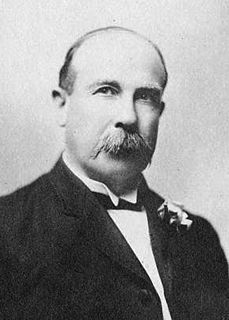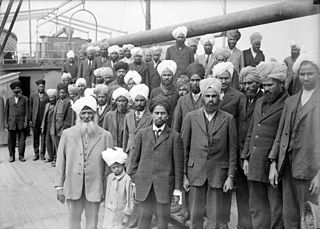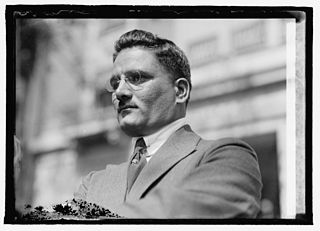Related Research Articles

Alexander Bethune, merchant, was the 12th Mayor of Vancouver, British Columbia, serving from 1907 to 1908. He had previously served seven years as alderman.

Gurinder Chadha, is a British film director of Indian origin. Most of her films explore the lives of Indians living in England. The common theme among her work showcases the trials of Indian women living in the UK and how they must reconcile their converging traditional and modern cultures. Although many of her films seem like simple quirky comedies about Indian women, they actually address many social and emotional issues, especially ones faced by immigrants caught between two worlds.

South Asian Canadians are Canadians who were either born in or can trace their ancestry to the South Asian subcontinent, which includes the nations of India, Pakistan, Bangladesh, Nepal, Sri Lanka, Bhutan, and the Maldives.

The Komagata Maru incident involved the Japanese steamship Komagata Maru, on which a group of people from British India attempted to immigrate to Canada in April 1914, but most were denied entry and forced to return to Calcutta. There, the Indian Imperial Police attempted to arrest the group leaders. A riot ensued, and they were fired upon by the police, resulting in the deaths of 22 people.
Ali Kazimi D.Litt. is an Indo-Canadian filmmaker, media artist and writer.
Guran Ditt Kumar, also known as G.D. Kumar Singh, was an Indian revolutionary associated with the pioneers of the Gadhar movement involved in the Indo-German conspiracy during the First World War.

Baba Gurdit Singh was the central figure in the Komagata Maru incident of 1914, one of several incidents in the history of early 20th century involving exclusion laws in both Canada and the United States designed to keep out immigrants of only Asian origin.

Stereotypes of South Asians are broadly believed impressions about individuals of South Asian origin that are often inconsistent with reality. While the impressions are wrongly presumed to be universally true for all people of South Asian origin, these stereotypes adversely affect the South Asians as well as the acculturation process.

Canadian Sikhs number roughly 500,000 people and account for roughly 1.4% of Canada's population. Canadian Sikhs are often credited for paving the path and creating the presence of Sikhism in the United States. Sikhism is a world religion with 27 million followers worldwide, with majority of their population in Punjab, India. The Legislative Assembly of Ontario and all other provinces in Canada celebrates April as Sikh Heritage Month.

Baba Sohan Singh Bhakna was a Sikh revolutionary, the founding president of the Ghadar Party, and a leading member of the party involved in the Ghadar Conspiracy of 1915. Tried at the Lahore Conspiracy trial, Sohan Singh served sixteen years of a life sentence for his part in the conspiracy before he was released in 1930. He later worked closely with the Indian labour movement, devoting considerable time to the Kisan Sabha.
William Charles Hopkinson (1880–1914) was an Indian police officer and later an immigration inspector in the Canadian Immigration Branch in Vancouver, British Columbia, who is noted for his role in infiltration and intelligence on the Ghadarite movement in North America in the early 1900s.

Bhai Bhagwan Singh Gyanee was an Indian Nationalist and a leading luminary of the Ghadar Party. Elected the party president in 1914, he was extensively involved in the Ghadar Conspiracy of 1915 during World War I and in the aftermath of its failure fled to Japan. He is also known for his nationalist poems that were published in the Hindustan Ghadar and later in the compilation Ghadar di Gunj.

Indian Canadians are Canadians with ancestry from India. The terms Indo-Canadian or East Indian are sometimes used to avoid confusion with the Indigenous Peoples of Canada. Categorically, Indian Canadians comprise a subgroup of South Asian Canadians which is a further subgroup of Asian Canadians. According to Statistics Canada, Indo-Canadians are one of the fastest growing communities in Canada, making up the second largest non-European group after Chinese Canadians.

Komagata Maru was a British-built steamship owned by the Shinyei Kisen Goshi Kaisya of Japan between 1913 and 1925. She was built as a cargo ship in 1890 and had previously been known as Stubbenhuk, then Sicilia, while sailing for two different German shipowners. She was later renamed Heian Maru.
Events in the year 1914 in India.
The continuous journey regulation was a restriction placed by the Canadian government that (ostensibly) prevented those who, "in the opinion of the Minister of the Interior," did not "come from the country of their birth or citizenship by a continuous journey and or through tickets purchased before leaving the country of their birth or nationality." However, in effect, the regulation would only affect the immigration of persons from India.
Joseph Edward Bird was a Canadian legal figure. Bird was the primary lawyer, hired by the Khalsa Diwan Society to represent the passengers on board the Komagata Maru in Vancouver, 1914. Bird fought actively against the threat of his clients' eventual deportation, and he made great effort to challenge Canada's highly restrictive immigration laws. Bird was an advocate for equality, and sought to reform the race-based exclusion laws in Canada. Bird attempted to prove that the passengers of the Komagata Maru should have been able to settle in Canada as British subjects, though he was ultimately unsuccessful; public and political sentiments and policies at the time were overtly racist, and the BC Court of Appeal ordered the Komagata Maru to return to India.

The Vancouver riots occurred September 7–9, 1907, in Vancouver, British Columbia, Canada. At about the same time there were similar anti-Asian riots in San Francisco, Bellingham, Washington, and other West Coast cities. They were not coordinated, but instead reflected common underlying anti-immigration attitudes. Agitation for direct action was led by labour unions and small business. No one was killed but the damage to Asian-owned property was extensive. One result was an informal agreement whereby the government of China stopped emigration to Canada.
The Ingress into India Ordinance, 1914, a law passed in British India in September 1914, at the outset of World War I, allowed the Government of India to screen, detain, and restrict the movement of people returning to India.

Mewa Singh Lopoke was a Sikh activist in Canada who was a member of the Vancouver branch of the Ghadar Party, which called for the overthrow of British rule in India. On October 21, 1914, Mewa Singh murdered a Canadian immigration inspector, W. C. Hopkinson, a political act of violence for which he was executed. In the eyes of Sikh Canadians, Mewa Singh's assassination of Hopkinson was a display of martyrdom, one which they commemorate annually.
References
- 1 2 3 "EKTA - CONTINUOUS JOURNEY - A film by Ali Kazimi". www.ektaonline.org. Retrieved 2016-12-05.